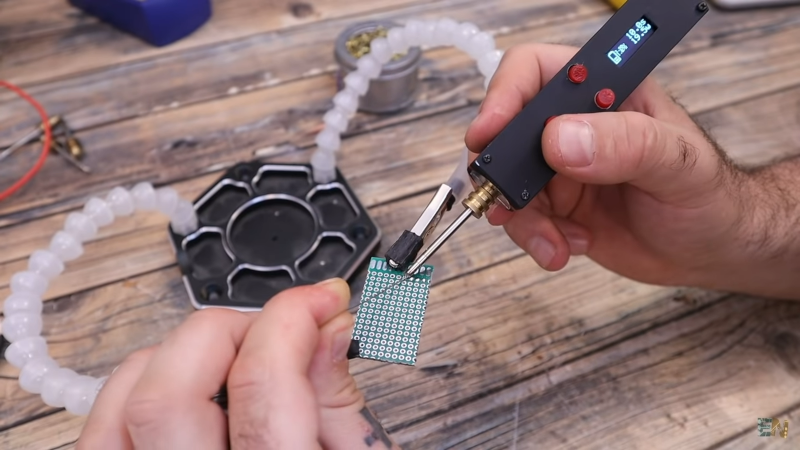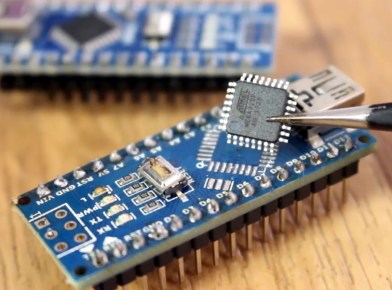17

Small portable soldering irons are all the rage so [electronoobs] decided to build one on his own. While the design isn’t quite as sleek as a commercial unit, considering it holds its own batteries, it looks pretty good.
Of course, the question is: does it work? You can see in the video below that it does, melting solder in about ten seconds. The weight is about 100 g, so it should be very comfortable to use.
A small display shows operational parameters. We also liked the threaded mount for the tips. The tips need about 4 A from the battery which results in a 15 W iron. However, the tips don’t have a built-in thermocouple, so you can’t exactly temperature control the tip.
There was a bit of a problem with undervoltage detection, so you do need to be prepared to remove the battery manually if the voltage drops too low. This is somewhat painful, and we might have considered wiring a physical power switch to avoid having to open the 3D-printed case too often.
On the PCB is an Arduino, a MOSFET, and some instrumentation to monitor the battery current and the tip resistance. Naturally, you could do what you like with the firmware to make any number of customizations.
While the iron looks a little like a TS-100, that iron doesn’t contain batteries, so you have to carry an external supply or a battery. But there are commercial irons with batteries. Of course, there have been other similar projects, but we like the looks and expandability of this one.




